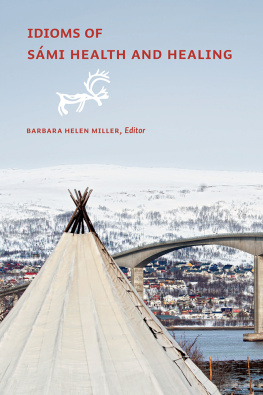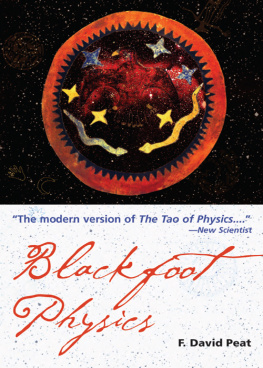Akakstiman

2002 Reg Crowshoe and Sybille Manneschmidt. All rights reserved. First edition published 1997. Reprinted 1998.
Second edition published 2002.
University of Calgary Press 2500 University Drive NW
Calgary, Alberta
Canada T2N 1N4
www.uofcpress.com
National Library of Canada Cataloguing in Publication Data
Crowshoe, Reg. Akakstiman
Includes bibliographical references. ISBN 1-55238-044-0
1. Piegan IndiansMedical care. 2. Siksika IndiansMedical care. 3. Medical care Alberta. 4. Traditional medicineAlberta. 5. Piegan IndiansRites and ceremonies. 6. Siksika IndiansRites and ceremonies. 7. Piegan IndiansMedicine. 8. Siksika IndiansMedicine.
I. Manneschmidt, Sybille, 1952- II. Title.
E99.P58C76 2002 362.108997307123 C2002-910099-2
We acknowledge the financial support of the Government of Canada through the Book Publishing Industry Development Program (BPIDP) for our publishing activities.
All rights reserved. No part of this work covered by the copyrights hereon may be reproduced or used in any form or by any means graphic, electronic or mechanical without the prior written permission of the publisher. Any request for photocopying, recording, taping or reproducing in information storage and retrieval systems of any part of this book shall be directed in writing to CANCOPY, Suite 1900, One Yonge Street, Toronto, Ontario, M5E 1E5.
Front cover photo: NA 118-16, courtesy of Glenbow Archives, Calgary
All royalties received through this publication will be transferred to the Joe and Josephine Crowshoe Foundation, Calgary.
Page, cover design, and typesetting by Kristina Schuring.

Photo: Sybille Manneschmidt.
This text is dedicated to our teachers, Joe and Josephine Crowshoe.
Introduction to the Second Edition
A kakstiman is a Blackfoot term meaning law-making. It relates to the one annual event in the seasonal cycle of Blackfoot culture when all people came together to celebrate the Sun Dance ceremony and witness the making and enforcement of their laws. Today, the Sun Dance is still in most Blackfoot nations an integral part of spiritual celebrations. But unlike in the past, this event is not anymore the coming together of all clans and has lost its social function of representing unity and strength of the various Blackfoot-speaking groups.
Since the beginning of the research on this book in 1992 (and its first publication in 1997), the Blackfoot Circle Structure model has been implemented in various settings. The new edition embraces these newer developments.
Consequently, the following text varies in certain aspects from the original version. The first edition focused on the health-related history of the Peigan people, present-day health issues, and a health-management model that is built on the Blackfoot Circle Structures principles.
This edition will extend its focus to offer other potential applications of this model in decision-making and mediation processes. Accordingly, certain changes have been made to the original text, and they are primarily to be found in Chapter 9. We hope that these additions will offer the reader a better understanding of the application of this management model and that we are able to demonstrate its value in interpreting Western practices to Native peoples whose collective past evolved around circular structures.
Summary
H ealth is one of many cultural constructions in human society. This document deals with the present-day health structures of a group of Native peoples in Canada, the residents of the Peigan Reserve in southern Alberta. The presented research will show that there are two health systems in place: one based on traditional Blackfoot culture and a second that has developed since the establishment of Indian reservesin this case since about the turn of the century.
The historical Blackfoot health system emphasizes the survival of the individual within the group and is grounded in traditional Blackfoot ceremonial processes that have been practised over hundreds of years. The other, newer, medical model is based on Western theories of illness and curing. Health services are provided by both models. However, the latter method is the only one endorsed by the government bureaucracies. Peigan traditional health services, by contrast, are a private choice.
This document describes the importance of traditional Blackfoot health services and their foundation in age-old ceremonies. The following chapters give some background information on these ceremonies, which have shaped both the past and present traditional health services. It is the researchers aim to show that these ceremonies provide a specific framework for decision-making that can be used as a model for present-day health service delivery. The study concludes that this model could be successfully used as a tool for discussion forums for both Western and traditional Blackfoot health services systems, with the potential to provide improved services for the Peigan community.
Acknowledgments
T his text is the result of ongoing research related to the Keep Our Circle Strong Project, Peigan Reserve, Alberta.
In many ways, this text is based on a truly collaborative process between two individuals: Reg Crowshoe, whose years of study have resulted in the development of the Blackfoot Circle Structure model and whose contributions were the basis for this report, and Sybille Manneschmidt, who contributed her knowledge and experience as a health professional and wrote the majority of the text. However, others need to be thanked for their assistance. Heather Crowshoe submitted material for Chapter 6, Helen Little Moustache compiled some of the data for the Bibliography, and Henrietta Yellow Horn wrote B. Henrietta Yellow Horn was also the research assistant for the duration of the project, and in many ways was the pillar of this project. Without her ongoing commitment and assistance, this project could not have been completed within its narrow timeline.
Last but not least, we thank the following organizations and agencies for their contributions: Peigan Health Administration, Treaty 7 Tribal Council, Alberta Health Aboriginal Health Strategy, Regional Centre for Health Promotion and Community Studies (RCHPCS), the University of Lethbridge, and the Department of Community Development, Government of Alberta, for their financial support; and the Old Man River Cultural Centre former and present staff, the Glenbow Museum and Archives, the Provincial Museum of Alberta, the Provincial Archives of Alberta, and the Canadian Heritage Division for their support in kind.











